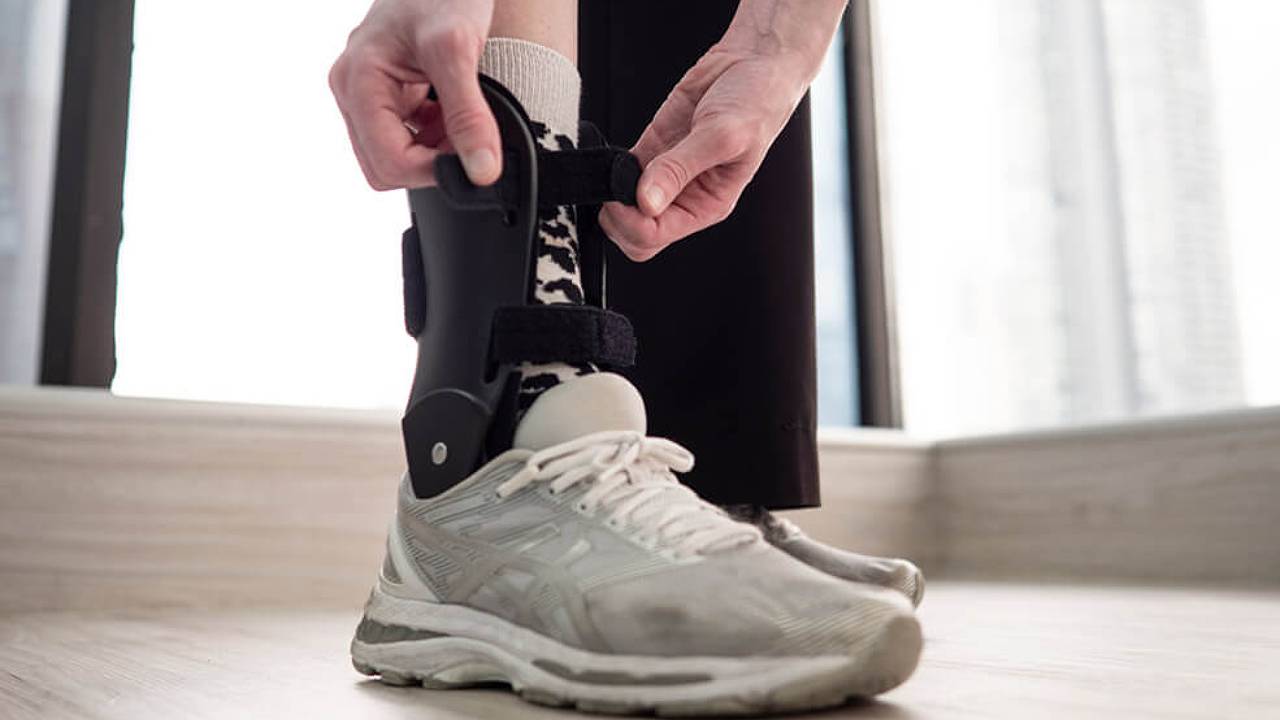During the consultation process, your podiatrist may recommend that your condition requires the use of an Ankle Foot Orthotic (AFO). A “Foot and Ankle Orthotic” is a highly specialised podiatric device used to address chronic conditions of the foot, ankle and lower limb through control and support. The device is used to correct bone and joint deformities such as severe flatfoot, or to compensate for lower limb weakness by facilitating more controlled and corrected motion. By wearing this device, even lower limb spasticity or muscle tightness can be corrected as the muscles are moved into a more normal position.
How the brace affects each patient is determined by the condition it is designed to manage. An AFO is generally used to stabilise the foot and ankle as one entity. It may be designed to increase a person’s ability to achieve toe ground clearance when walking (reducing the number of falls or stumbles the person has), stabilise painful joints and hence reduce pain, or stop deformity from progressing (such as flatfoot deformity when addressed early enough). AFO braces are especially effective for foot and ankle conditions caused by a variety of neurologic and musculoskeletal disorders:
- Cerebral palsy
- Multiple sclerosis
- Spina bifida
- Global development delays
- Stroke
- Foot drop
- Adult acquired flatfoot, and posterior tibial tendon dysfunction
- Achilles tendinopathy or tendinitis
- Peroneal tendinopathy or tendinitis
- Congenital flatfoot
- Hypermobility syndrome
- Marfan’s syndrome
- Recurrent falls
- Ankle instability or weakness
- Ankle and midfoot arthritis
- Foot and ankle tendon injuries
- Knee pain caused by foot and ankle conditions
- Select cases of diabetic osteoarthropathy
- Polio/ Post-polio syndrome

AFO designs have advanced drastically from the traditional rigid AFO that is fixed to the leg and doesn’t move. AFO devices can now be highly specialised to accommodate almost all foot and ankle deformities, getting patients back to a more normal walking gait. The new devices are contoured, balanced orthotics which are articulated to lower leg uprights; the AFO is ideally suited to stabilize rotational forces at the midtarsal, subtalar and talocrural joints. Prescription of the device adds further enhancement or restriction of motion in sagittal, frontal, and transverse planes.
These new designs of AFO can be rigid, semi-rigid, or dynamic. They must be customised with a full mould of the foot and ankle taken before the device is made and prescribed. As the device has more technical areas to take into consideration than a traditional foot orthotic, it requires closer follow-up monitoring. The base of the AFO incorporates a full custom foot orthotic, which then extends up the leg. It is designed to take into consideration a patient’s static and dynamic biomechanics, while being easy and comfortable to wear due to its lightweight, low-profile design.


Advantages of a AFO:
- Promotes natural gait pattern.
- Enhances strength and stability to control torsion forces.
- When foot orthotics are not the optimal approach.
- Lightweight, modern, low-profile design provides added strength and stability, while avoiding contact at critical pressure points and facilitating a normal walking pattern.
- Unique casting design eliminates pressure sores and allows for calf expansion.
- Lower profile than traditional plastic AFO.
- Enhanced airflow for cool comfort.
- Accommodate a wide variety of needs.
- Many options for customisation.
- Reliable, economical options to meet multiple clinical needs.





